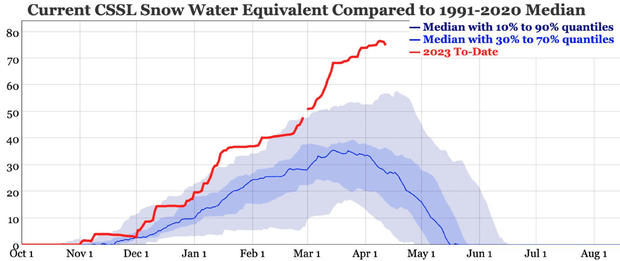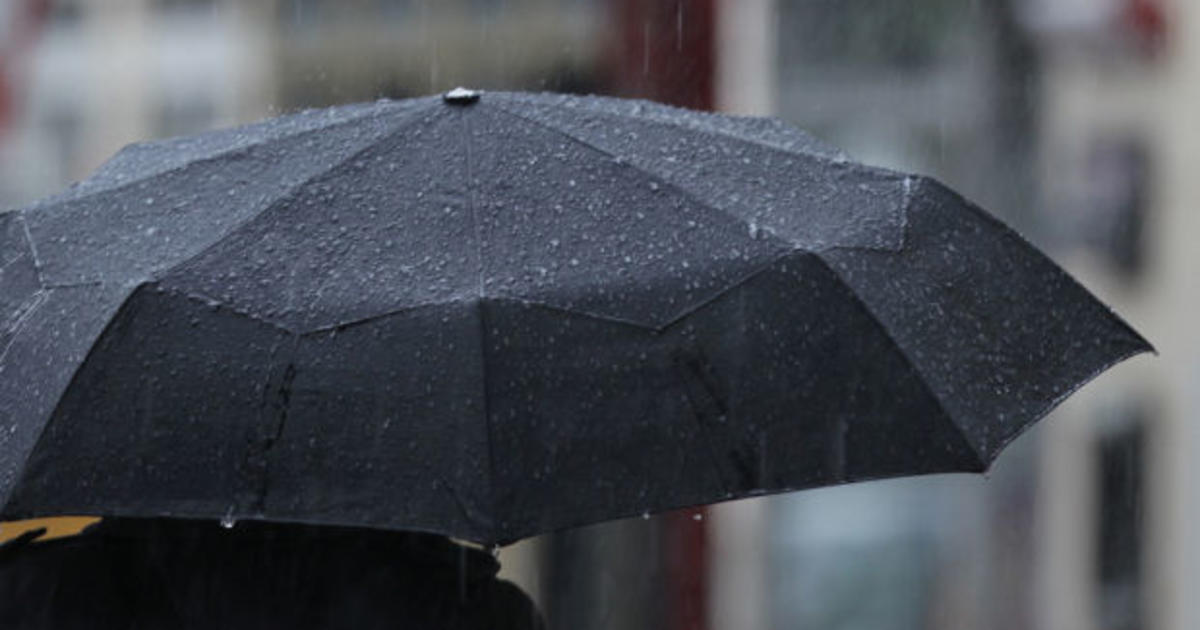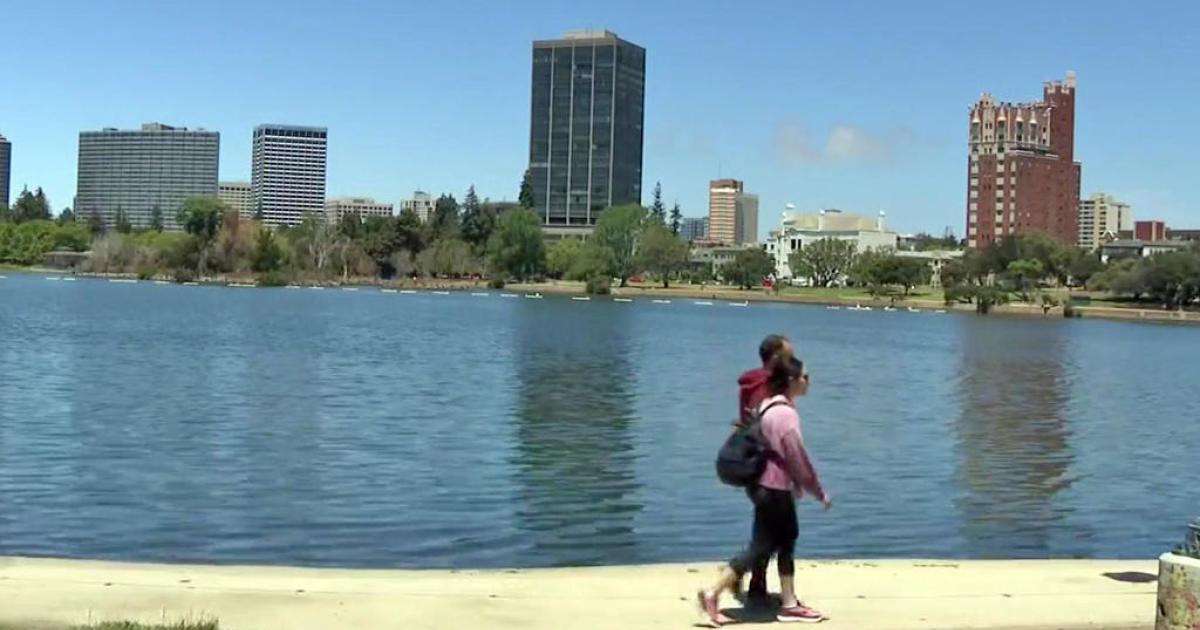Rising spring temperatures trigger Sierra snowmelt flood fears; 'We know the heat's coming'
TRUCKEE -- The forecast for temperatures in the 60s and possible rainshowers next week around the Tahoe Basin could be heralding the beginning of the feared snow melt after an epic winter in the Sierra.
Dr. Andrew Schwartz, the lead scientist at the UC Berkeley Central Sierra Snow Lab, is among those who are concerned what the coming months holds once the 700-plus inches or nearly 60 feet of snow that has fallen since October in the mountains begins to melt off.
"Flooding is a concern with these deep snowpacks," he told KPIX. "Primarily through things like warm atmospheric rivers where we get rain falling on top of them that can cause rapid flooding and catastrophic consequences downstream...prolonged warm periods are also a concern."
The National Weather Service in Reno was predicting temperatures in or near the 60s for Truckee for the next seven days with a high of 65 by Thursday.
"The warming trend into this weekend will ramp up snowmelt throughout the area," the NWS forecasters said. "Potential for prolonged warm and dry conditions, especially by mid-late next week, will test our recor snowpack and lead to prolonged high flows as additional energy will help to melt snow in deeper mid-elevation areas."
There are growing areas of green -- designating flooding threats -- each day on the maps posted by the National Weather Service California Nevada River Forecast Center.
"With temperatures warming above average into next week, we are expecting snowmelt and resulting river flows to begin increasing," forecasters at the center predicted this week. "Our deterministic and ensemble forecasts at a few Sierra basins showing the potential for higher river flows."
Hanford forecasters have their eyes on Tulare County where southern Sierra runoff was breathing new life into Tulare Lake, which has been dry for decades.
"The real challenge as we move into spring and summer though is flooding — significant flooding — particularly in the Tulare Lake Basin," said Karla Nemeth, director of the Department of Water Resources.
Officials have warned that the massive snowpack that has piled up in the Sierra Nevada is a dripping time bomb. As it melts, the flooding could triple in size in Tulare County by summer, threatening the surrounding communities and costing billions in losses.
"All of the crops are completely flooded and ruined," resident Martina Sealy told CNN as she held her baby daughter and gazed out across white-capped water, where vast fields of cotton and alfalfa had grown all her life. "It takes a lot of jobs for people. That's a lot of food that we provide for up and down California and all around the nation. It's pretty scary."
Even scarier when you realize the standing water that's there now is just the beginning of their ordeal.
"This is just from the rain," Sealy said of the flooded fields. "But when the snow melts, there's nowhere for it to go besides here."
Tulare Lake was once the biggest freshwater body west of the Mississippi until farmers consumed so much of the Sierra Nevada runoff that it dried up and, over the decades, the lake bed became crop land.
Water was always a concern in Tulare County, but mainly because there was never enough. As thirstier crops like almonds and pistachios came into vogue, relentless pumping of groundwater made Corcoran one of the fastest-sinking areas of the nation, just in time for Tulare Lake to come back from the dead with a vengeance.
"The ground is literally sunk in some places by 10 or 15 feet over the past decade," said Daniel Swain, a UCLA climate scientist. "That has literally changed the topography of the historical lakebed. Some places are lower even than they were the last time there was a big flood event."
Longtime residents, like Sidonio Palmerin, remember how the last great flood in 1983 took two years to dry out while the loss of agricultural work hollowed out Corcoran.
"We lost half our school population and about one-third of our city population," he recalled. "A lot of the people that were relocated lost their homes, their cars. It took a long time to recuperate."
Since there was no massive snowpack to worry about in '83 and the town was 10 feet higher, he's among the town's seniors who worry this time could be much worse.
"There are people that are disabled, people that don't have transportation," Mary Gonzalez Gomez said, standing in front of the only home she's ever known. "And they're so worried, if we get flooded, where will we go? What will we do?"
As the water piled up, the city and local farming interests started using earth movers to raise the 14.5-mile levee that protects more than 20,000 residents and 8,000 inmates in two prisons.
"God willing, that'll protect the city of Corcoran," said Sheriff David Robinson of King County.
But he knows they are racing against the melting snow.
"We've been fortunate with a very slow, mild spring so far," he said. "But we know the heat's coming."




